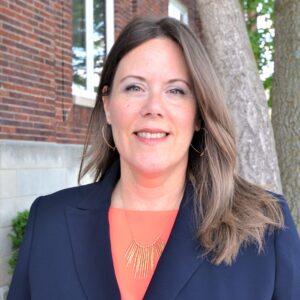Families comparing residential programs for troubled youth near me want care that’s effective and accessible. Telehealth now makes it easier for teens and young adults to receive continuous, evidence-informed support—before, during, and after treatment—no matter where they live. At Ember Recovery in Central Iowa, virtual tools extend our in-person care so teens don’t lose momentum when school, work, or distance gets in the way. Guidance from national agencies shows telehealth can expand access, maintain privacy, and improve engagement when it’s integrated thoughtfully into treatment.
Why Telehealth Matters for Residential Programs for Troubled Youth Near Me
Telehealth eliminates common barriers—transportation, scheduling conflicts, and stigma—so teens can attend therapy consistently and involve family members who can’t be on-site. National data document a dramatic rise in clinician telemedicine use since 2019, underscoring how virtual care has become a mainstream, quality-focused option alongside in-person services.
What this means for your family:
- More touchpoints: Regular virtual sessions reduce gaps between appointments.
- Privacy & security: Federal best-practice guides outline HIPAA-aligned steps for safe, confidential visits.
- Geographic reach: Teens in rural areas can see specialists without long drives.
How Telehealth Integrates with Teen Residential Treatment Central Iowa
Telehealth doesn’t replace high-acuity care; it connects the continuum. For many clients at Ember Recovery, virtual services support each phase:
- Pre-admission engagement: Virtual meetings help teens meet clinicians, set goals, and lower first-day anxiety.
- During residential: Family therapy and education can continue online so caregivers stay involved.
- Step-down IOP (two tracks): Telehealth augments our Teen IOP (12–18) and Young-Adult IOP (18+)—either as a step-down option after residential or a standalone pathway when that level of support is the right fit.
- Aftercare & alumni: Ongoing virtual check-ins and groups maintain accountability and connection.
This hybrid approach aligns with national recommendations to balance virtual and in-person care based on clinical need, access, and safety.
Core Telehealth Tools Teens Use in Recovery
1) Secure video sessions
Weekly or biweekly therapy (individual, family, or group) focused on coping skills, relapse prevention, and mood regulation. SAMHSA’s implementation guide details how telehealth can deliver evidence-based practices effectively in behavioral health.
2) Digital care plans & messaging
Between-session prompts, goal tracking, and brief clinician check-ins keep progress moving—especially during transitions back to school or work.
3) Virtual family therapy
Caregivers join from different locations, learn boundary-setting, and reinforce at-home routines that support recovery—without travel obstacles. (Protect privacy by choosing quiet spaces and secure networks.)
Benefits of Telehealth for Teen Substance Abuse Central Iowa
- Consistency: Fewer missed sessions equals steadier progress.
- Comfort: Teens often open up more in familiar environments.
- Speed to support: When cravings or stress spike, a timely virtual check-in can prevent setbacks.
- Equity: Rural households gain access to specialists and groups they wouldn’t otherwise reach. Federal reviews highlight telehealth’s role in expanding behavioral health access while keeping quality in view.
What the Research and Guidance Say
- Telehealth is a validated modality for behavioral health, including substance use treatment—when delivered with privacy safeguards and clinical structure.
- Use the right mix of virtual and in-person visits. For higher-risk moments (e.g., safety concerns), in-person care may be preferred; for skills practice and family coaching, virtual works well.
- Telemedicine adoption surged among U.S. clinicians from 2019–2021, and quality measures continue to be studied and refined—good news for families who need dependable options.
- Privacy and security are manageable with clear steps (private locations, identity verification, protected devices, no public Wi-Fi).
How Ember Recovery Puts Telehealth to Work—Step by Step
Assessment & fit
We start by identifying needs, risk level, and goals to decide which services are best delivered in person and which can be virtual—then we outline a clear schedule.
Personalized plan
Your teen’s plan may combine on-campus therapy with virtual family sessions, IOP groups, and alumni check-ins. This keeps progress steady as responsibility and independence grow.
Family engagement
Caregivers receive coaching on communication, boundaries, and relapse-prevention strategies—often via virtual sessions that fit real-life schedules.
Ongoing measurement
We review attendance, self-reported cravings/mood, school/work progress, and family feedback to adjust intensity and format over time—consistent with research-based principles for adolescent treatment.
Take the Next Step
If you’re exploring residential programs for troubled youth near me or weighing teen residential treatment Central Iowa, telehealth can make recovery more consistent and accessible—during treatment and long after graduation. Ember Recovery blends in-person care with secure virtual options so teens and young adults can keep building skills, connection, and confidence.
Contact Ember Recovery today to schedule an evaluation or ask about virtual options:
https://emberrecovery.org/contact-us/
Sources:
[1] https://library.samhsa.gov/product/telehealth-treatment-serious-mental-illness-and-substance-use-disorders/pep21-06-02-001?utm_source=chatgpt.com
[2] https://www.cdc.gov/nchs/products/databriefs/db493.htm?utm_source=chatgpt.com

Andrea Dickerson is a Licensed Therapist and Certified Substance Use Counselor who has worked in behavioral health since 1997. Currently, Andrea is the Director of Behavioral Health, overseeing the Ember residential treatment programs and YSS outpatient counseling clinics throughout Central and North Central Iowa. She became a Motivational Interviewing (MI) trainer in 2006 and provides MI trainings throughout Iowa.
Andrea specializes in working with adolescents and their families and enjoys seeing the family relationships grow through therapy. Andrea is also a CARF International Surveyor, going around North America ensuring behavioral health organizations are meeting required standards.
In her free time, Andrea enjoys cheering on the Iowa Hawkeyes and Chicago Cubs, as well as being an active member of Soroptimist International of the Americas (SIA), a global organization that provides women and girls with access to the education and training they need to achieve economic empowerment. She has been a member of the SI of Des Moines club since 2012 and has been actively involved at the regional level, currently serving as Co-Governor of the Peaks to Plains Region.
Through her involvement in SIA, Andrea has been actively involved in the Dream Programs, coordinating annual Dream It, Be It: Career Support for Girls projects, which give girls the tools they need to achieve their education and career goals, empowering them to break cycles of poverty, violence, and abuse.
